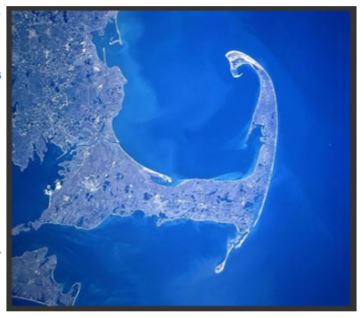Geology of Cape Cod
Cape Cod is truly a geological marvel, it and the islands were formed entirely
by glaciers that existed 8,000 to 80,000 years ago. These glaciers deposited
all of the tremendous quantities of sand, gravel, silt, clay, rocks, and boulders
that form this peninsula. Water and wind blown erosion formed many of
these deposits into layers that can be thick or thin and can change
considerably from one site to another. Some of these layers do not produce
sufficient amounts of water; others produce poor quality water. On the whole,
though, we are quite fortunate here in that many of the water bearing zones
are relatively close to the surface and often produce large quantities of water.

Your Water System
Installation of a complete water system includes a variety of tasks. The drilling of a water supply well is a complex task necessitating
critical decisions by experienced personnel. To us it’s not just a hole in the ground; it’s an engineered water intake structure. The
objective is to produce the maximum yield, while minimizing the amount of sand in the water. Attention to the details make it all
possible. We spend the extra time to perform an important step known as Test Drilling, whereby we produce an accurate log of the
formation changes and their gradation at the well site. This information is the basis for selecting the screen slot size, length, and
placement depth for your well. The screen slots are the openings through which the ground water enters the well. The larger the
slots, the more water that can enter; but they must be small enough to hold back the sand grains. So, a choice has to be made to
balance both objectives.
The second most important step is the Well Development. This is the process of cleaning out the well immediately after drilling. The
objective is to remove the fine sand and silt particles from around the exterior of the screen and maximize the water production of the
well. We perform this process with a large air compressor which produces a vigorous jetting and surging action in the well. Different
development methods produce different results; we have found that the high capacity air process produces the most effective result.
This translates into more efficient and longer lasting wells.
A pump system, in order to operate efficiently and have a long life, requires proper selection of the size of components and materials
of construction. The pump, piping, the tank, and the controls must all work together for a properly functioning system. There are a
wide variety of components we can choose from. Some, though less expensive, will not last as long as we want, or are not the
proper material to resist corrosion, or are not heavy duty enough for the intended service. Further, there are always new components
being developed and introduced and we are continually reviewing these products for improvements to your water system.
An example of a recent improvement is PVC well casing that is joined without the need of glue. The joints are mechanically coupled,
eliminating the use of PVC glue and cleaner. This eliminates the possibility of any trace amounts of glue and solvents showing up in
your water supply.
Though your submersible pump will be out of sight and probably out of mind, its selection is important. We use “3 wire” pumps
because the motor starting components are contained in a control box that we mount on the wall next to the well tank. A “2 wire”
pump installation has miniaturized starting components incorporated in the submersible motor. This “2 wire” installation is less
expensive, but should a starting component failure occur, the entire pump must be pulled and the motor replaced. With the “3 wire”
pump it is a relatively simple matter to replace the control box, and significantly less expensive.
Another recent technological advance is variable speed submersible well pumps. Also known as “Constant Pressure” pumps, these
systems eliminate the pressure variation that occurs with traditional well pumps and provide “city like” pressure from your private
well. These pumps speed up when more water is used in the house, always maintaining the preset constant pressure. They are ideal
for new installations and can be retrofitted to many existing systems without changing the pump.
The well tank should be liberally sized; big is definitely better. The least expensive installations use the smallest tank available. This
results in frequent pump starts and reduced pump and motor life. We use the Flex-Lite line of tanks because their construction is all
fiberglass and PVC; not steel which will eventually rust and develop a leak.
Finally, the entire system will carry our standard one year warranty covering labor and materials. Some components may be
warranted for a longer period by the manufacturer.
We use quality products from the following long established American manufacturers:

